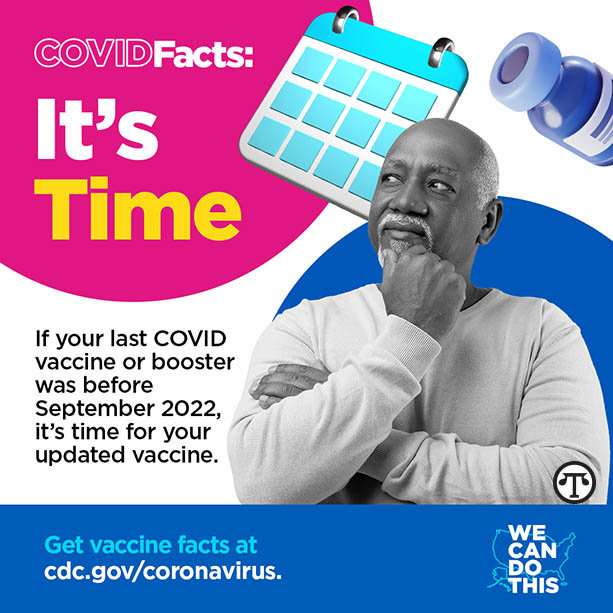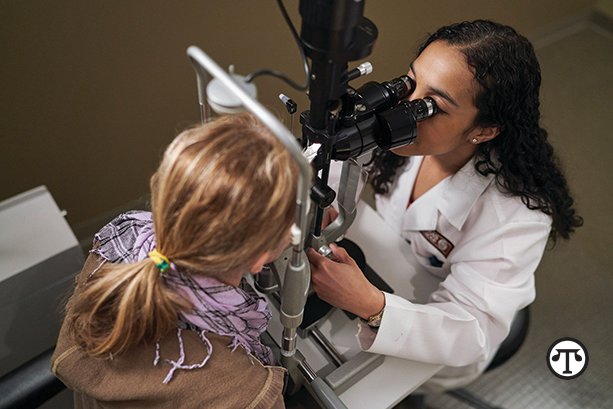FOR YOUR HEALTH: Jump Start Your Spring with Tips for a Healthy Household
 (NAPSI)—As the days get longer and the temperatures warm up, spring is the perfect time to take stock of your household and your health. This season is a time of renewal and rejuvenation, offering the opportunity to make some simple moves to improve your overall well-being.
(NAPSI)—As the days get longer and the temperatures warm up, spring is the perfect time to take stock of your household and your health. This season is a time of renewal and rejuvenation, offering the opportunity to make some simple moves to improve your overall well-being.
To make the most out of a spring refresh, we’ve rounded up some of our top cleaning and health and wellness tips:
•Clean high-touch surfaces. Cleaning surfaces in your home helps prevent the spread of germs that can make you sick, including COVID-19 and other viruses. High-touch surfaces, such as light switches, doorknobs, and countertops, should be cleaned regularly, especially after having visitors over. Make sure to use household cleaners that contain soap or detergent to ensure you are removing germs that could cause illness.
•Wipe down your electronics. Many of us might remember to disinfect our phones, but it’s easy to forget that remote controls, keyboards, tablets, and other electronics all need a good scrub to keep germs at bay. Be sure to follow the manufacturer’s instructions and recommendations for cleaning.
•Break projects into small chunks. You don’t have to tackle your house from floor to ceiling to make progress on your healthy household plans. Rather, pick one 10-minute task to complete each day, such as wiping down counters, starting a load of laundry, or vacuuming the blinds. Smaller tasks can seem more manageable and will get your refresh kickstarted.
•Improve the ventilation in your home. Spring is a great time to check your air filters, making sure they are installed properly and replacing them as necessary. Doing so reduces air pollutants and virus particles in your home, helping to stop the spread of disease. In addition, you could consider adding a portable air cleaner to improve ventilation and reduce the number of germs in the air that people exhale when breathing, talking, singing, coughing, and sneezing.
•Restock your medicine cabinet. Take some time to check the expiration dates on your medications and then purchase new items that you might need, like nasal sprays, allergy medications, and first aid materials. It’s also a good idea to have extra COVID home testing kits on hand as well. With insurance or flexible spending accounts covering many health products, including at-home COVID testing kits, now is the time to stock up.
•Make sure you are up to date on your COVID vaccine. No one wants to get sidelined with COVID this spring, so consider getting the latest vaccine to keep your household healthy. Updated COVID vaccines are now recommended for children and adults if their last dose was before September 2022.
“As spring hits its full stride, it’s a great time to make sure you are prioritizing your health and well-being,” said Dr. Sonia Valdez, Chief Nursing Officer for National Healthcare and Housing Advisors. “One important way to do that is by making sure you’ve gotten a free, updated COVID vaccine, which can boost your immune system even if you’ve had COVID already.”
For more information about COVID vaccines and to find a vaccine near you, go to vaccines.gov or text your ZIP code to 438829.


 With heart disease remaining a leading cause of death in the United States, more Americans are seeking ways to promote cardiovascular health. Amidst the picturesque landscapes of the northeastern state of Maine, residents and visitors alike are discovering the benefits of outdoor activities for maintaining a healthy heart. From hiking to swimming, the state offers various ways to engage in exercise and leisure activities that contribute to overall well-being.
With heart disease remaining a leading cause of death in the United States, more Americans are seeking ways to promote cardiovascular health. Amidst the picturesque landscapes of the northeastern state of Maine, residents and visitors alike are discovering the benefits of outdoor activities for maintaining a healthy heart. From hiking to swimming, the state offers various ways to engage in exercise and leisure activities that contribute to overall well-being. As the winter snow melts and the sun starts to shine, people in the Northeast United States look forward to the arrival of spring. However, for many, springtime also brings along the onset of seasonal allergies. This is especially true in Maine, where the blooming of flowers and trees can cause a range of allergic reactions.
As the winter snow melts and the sun starts to shine, people in the Northeast United States look forward to the arrival of spring. However, for many, springtime also brings along the onset of seasonal allergies. This is especially true in Maine, where the blooming of flowers and trees can cause a range of allergic reactions. What if you could transform your life today and start feeling better tomorrow? What if it wasn’t that big of a deal to do so? And what if you didn’t need to spend a fortune to get there either? You know what would also be nice? If you could transform not just your physical appearance, but also the way you think about yourself and your life. This can seem like an overwhelming commitment at first, but once you break it down and think about it as a holistic process rather than a giant leap, it seems much more achievable. After all, we’re talking about 5 minutes per day. That’s all it takes!
What if you could transform your life today and start feeling better tomorrow? What if it wasn’t that big of a deal to do so? And what if you didn’t need to spend a fortune to get there either? You know what would also be nice? If you could transform not just your physical appearance, but also the way you think about yourself and your life. This can seem like an overwhelming commitment at first, but once you break it down and think about it as a holistic process rather than a giant leap, it seems much more achievable. After all, we’re talking about 5 minutes per day. That’s all it takes!
 (NAPSI)—The winter holidays have ended, and spring is in sight. As the days start to lengthen, it is a good time to tend to your overall health and well-being, including your mental health, by practicing daily acts of self-care.
(NAPSI)—The winter holidays have ended, and spring is in sight. As the days start to lengthen, it is a good time to tend to your overall health and well-being, including your mental health, by practicing daily acts of self-care. Allergy season doesn’t have to mean misery if you heed a few hints for your home.
Allergy season doesn’t have to mean misery if you heed a few hints for your home. (NAPSI)—Kidney disease is often referred to as a “silent disease” because there are usually no symptoms during its early stages. In fact, as many as 90% of Americans who have chronic kidney disease (CKD) don’t know they have the disease until it is advanced.
(NAPSI)—Kidney disease is often referred to as a “silent disease” because there are usually no symptoms during its early stages. In fact, as many as 90% of Americans who have chronic kidney disease (CKD) don’t know they have the disease until it is advanced.
 You might think that seasonal allergies are just a spring thing. Not true. Autumn brings pollen from the ragweed plant to many parts of the U.S. And if you’re allergic to it, you may find yourself dealing with watery eyes, a runny or stuffy nose and an itchy throat.
You might think that seasonal allergies are just a spring thing. Not true. Autumn brings pollen from the ragweed plant to many parts of the U.S. And if you’re allergic to it, you may find yourself dealing with watery eyes, a runny or stuffy nose and an itchy throat.